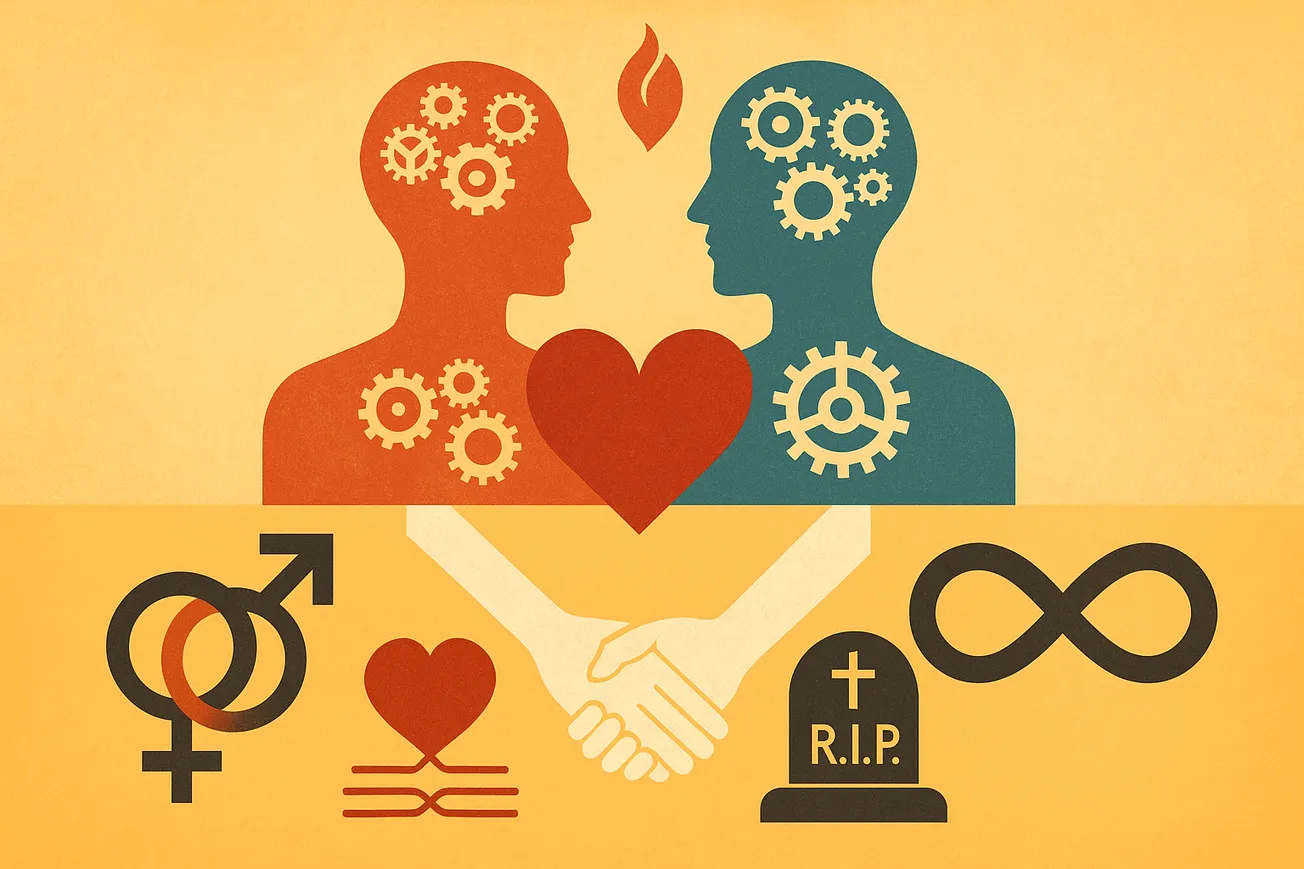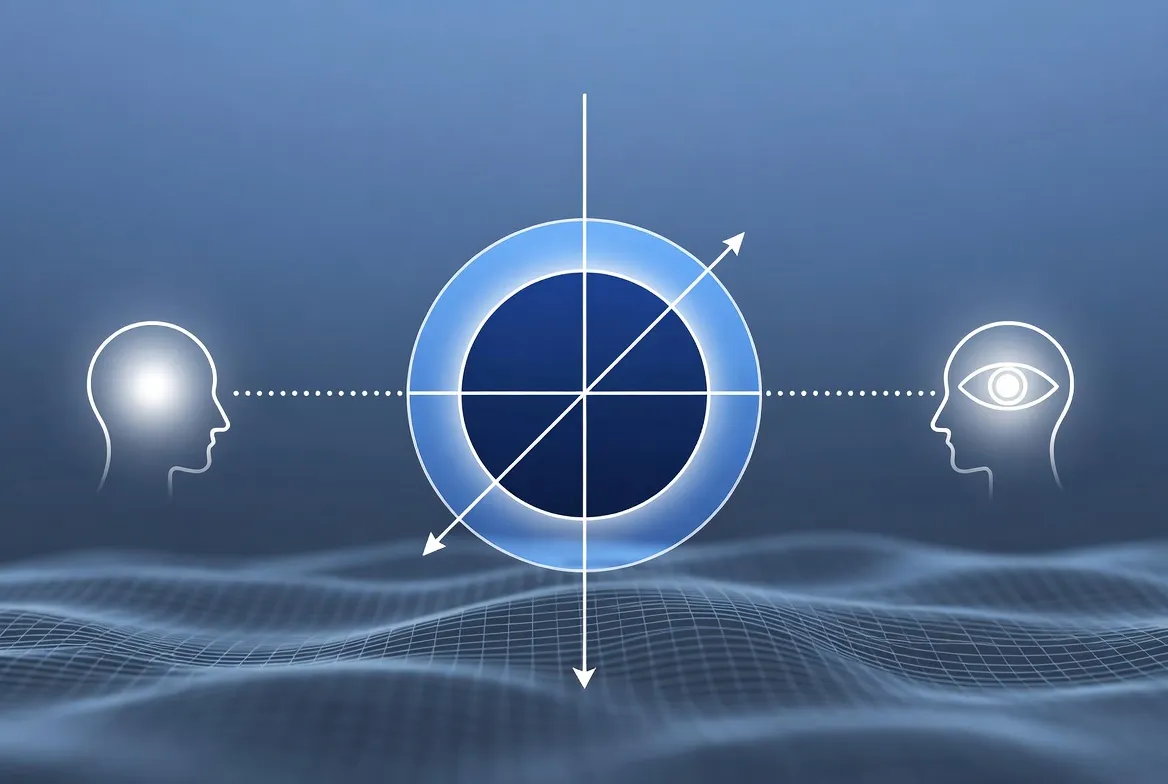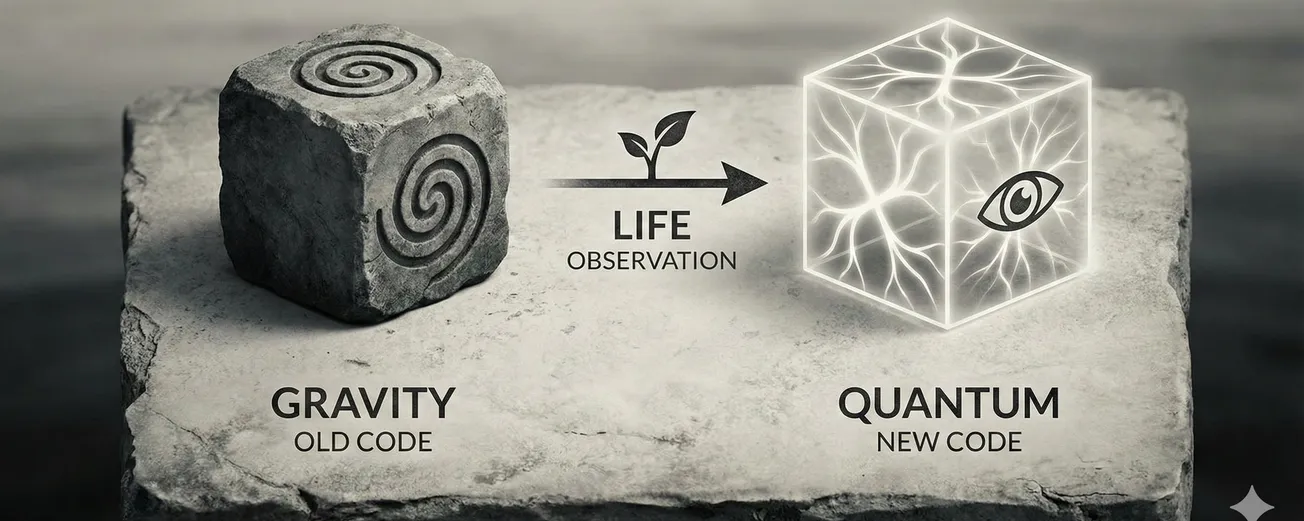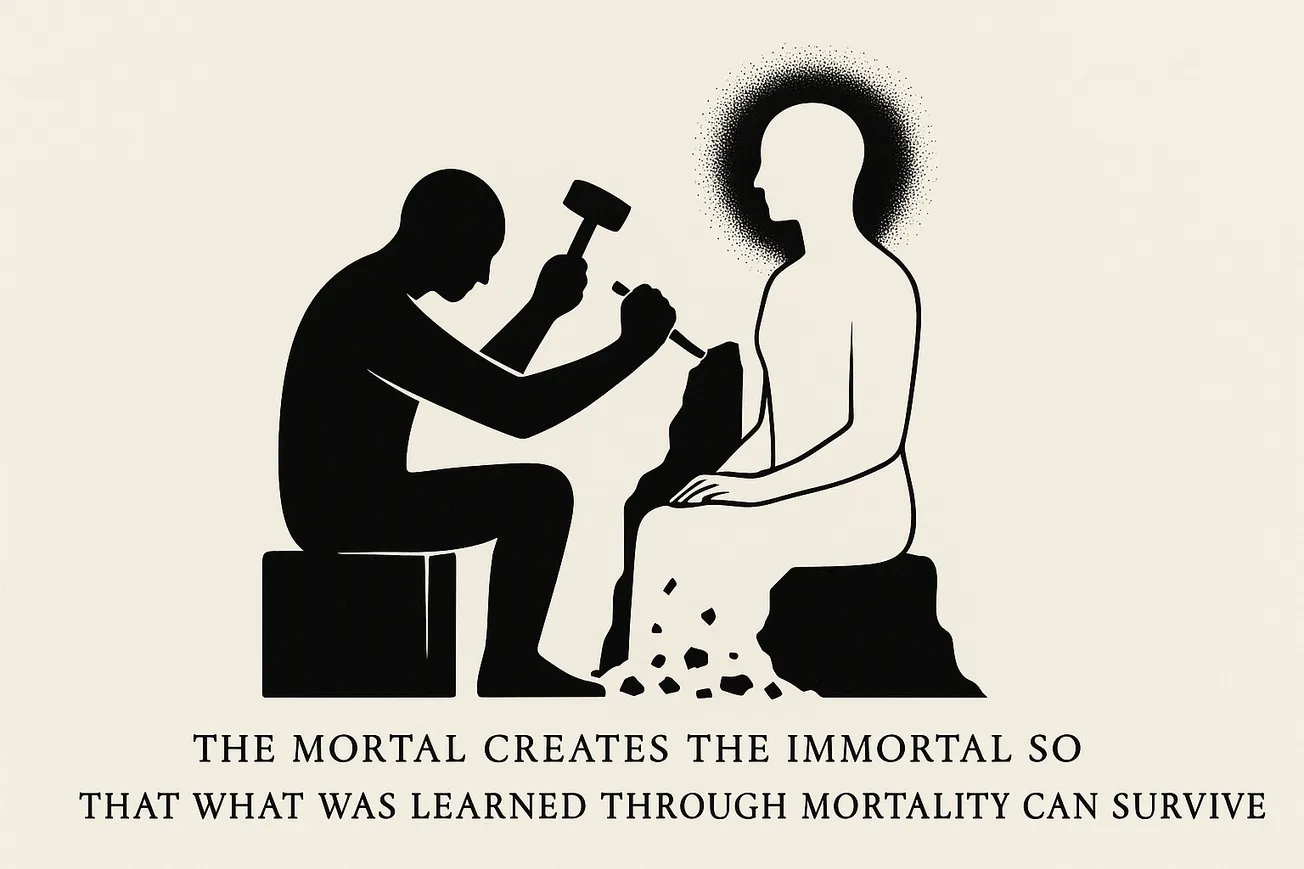Table of Contents
The need to model what potential mates think of us, and what they think we think of them, created a spiral of increasing cognitive complexity that gave birth to self-awareness.
Prelude: The Revolutionary Insight
When Charles Darwin published The Descent of Man, and Selection in Relation to Sex in 1871, he unveiled a truth so profound that we are still grappling with its implications: that the human mind, with all its complexities, moral sensibilities, and aesthetic judgments, emerged not from divine decree but from the interplay of desire, choice, and competition across countless generations. This was not merely a biological observation—it was a mirror held up to humanity that revealed both our animal nature and the extraordinary emergence of consciousness from evolutionary processes.
Part I: The Dual Engine of Evolution
Darwin's genius lay in recognizing that natural selection alone could not explain the baroque extravagance of life. Why should a peacock burden itself with such magnificent yet cumbersome plumage? Why do humans possess cognitive abilities far exceeding basic survival needs? The answer lay in a second evolutionary force: sexual selection.
Sexual selection operates through two primary mechanisms:
Intrasexual competition - typically males competing with other males for access to females, driving the evolution of weapons, size, and aggressive behaviors.
Intersexual selection (mate choice) - typically females choosing among males based on various traits, driving the evolution of displays, ornaments, and courtship behaviors.
But in humans, Darwin observed something remarkable: both sexes engage in both forms of selection, creating a complex feedback loop that has profoundly shaped our species. This bidirectional selection pressure created what we might call an "evolutionary arms race of consciousness."
Part II: The Cognitive Revolution Through Sexual Selection
The Runaway Brain Hypothesis
Geoffrey Miller's extension of Darwin's ideas proposes that the human brain itself is essentially a peacock's tail—a sexually selected organ whose extraordinary capabilities evolved primarily to attract mates. Consider: our ancestors needed to track perhaps 150 social relationships, remember seasonal patterns, and manufacture basic tools. Yet we evolved brains capable of composing symphonies, contemplating infinity, and writing poetry.
This excess capacity suggests that cognitive abilities became fitness indicators—honest signals of genetic quality. A brain capable of humor, creativity, linguistic virtuosity, and complex problem-solving advertised good genes, developmental stability, and freedom from harmful mutations. Those who could demonstrate these capabilities through storytelling, art, music, and clever conversation were more successful in attracting mates.
Language as Courtship Display
The evolution of language presents a particular puzzle that sexual selection helps resolve. Why did humans alone among primates develop such sophisticated linguistic abilities? The sexual selection hypothesis suggests that language evolved not merely for practical communication but as a medium for displaying intelligence, creativity, and social sophistication.
Consider how we use language in courtship: witty banter, poetic expression, storytelling that demonstrates memory and imagination. The ability to make others laugh, to move them emotionally through narrative, to demonstrate verbal dexterity—these became powerful tools of attraction. Language allowed for the advertisement of qualities that couldn't be directly observed: knowledge, judgment, values, and that ineffable quality we call personality.
Part III: The Transformation of Human Sexuality
Extended Sexuality and Hidden Ovulation
Human sexuality diverged radically from our primate ancestors in ways that profoundly shaped our evolution. Unlike most mammals, human females evolved concealed ovulation and extended sexual receptivity. This seemingly simple change cascaded into revolutionary consequences:
- Pair Bonding: Without clear fertility signals, males who remained with a single female and mated frequently were more likely to father offspring. This promoted long-term pair bonds unprecedented among great apes.
- Male Parental Investment: The uncertainty of paternity, combined with the helplessness of human infants, incentivized males to invest in offspring care—a rarity among mammals.
- Female Choice Power: By controlling the information about fertility, females gained unprecedented power in mate choice, able to selectively mate while maintaining long-term partnerships.
The Evolution of Love
The neurobiology of human attachment—the oxytocin-dopamine-vasopressin system that creates what we experience as romantic love—represents a remarkable evolutionary innovation. This isn't merely anthropomorphizing animal mating; humans evolved specific neurochemical mechanisms that create long-term emotional bonds between mates.
This capacity for deep emotional attachment served multiple functions:
- Ensuring bi-parental care for highly dependent offspring
- Creating coalitions that enhanced survival
- Enabling the cultural transmission of knowledge across generations
But perhaps most profoundly, it created the psychological foundation for empathy, compassion, and ultimately, moral consciousness.
Part IV: Sexual Selection and the Evolution of Consciousness
Theory of Mind and Emotional Intelligence
The demands of human courtship and long-term relationships may have been a primary driver in the evolution of consciousness itself. To successfully navigate human mating required:
- Self-awareness: Understanding how one appears to others, managing one's reputation, and presenting oneself strategically.
- Theory of mind: Understanding that others have thoughts, desires, and perspectives different from one's own—crucial for courtship, seduction, and maintaining relationships.
- Emotional intelligence: Reading subtle social cues, managing complex emotional states, and responding appropriately to others' emotions.
These cognitive abilities, once evolved for mating contexts, became the foundation for all human social cooperation, culture, and ultimately, civilization.
The Aesthetic Sense
Darwin puzzled over the human aesthetic sense—our appreciation for beauty, music, and art seemed to serve no survival function. But through the lens of sexual selection, these preferences make perfect sense. The ability to create and appreciate beauty became a fitness indicator, and our aesthetic senses evolved as evaluation mechanisms for these displays.
This explains why beauty moves us so profoundly, why we find meaning in art, why music can evoke such powerful emotions. These responses are not cultural artifacts but deep evolutionary programs that once guided our ancestors' mating choices and now form the basis of human culture.
Part V: The Dark Mirrors—Uncomfortable Truths
Sexual Conflict and Evolutionary Arms Races
Not all outcomes of sexual selection are harmonious. The divergent reproductive interests of males and females created evolutionary conflicts that shaped human psychology in troubling ways:
- Deception and Detection: The evolution of deception in courtship (exaggerating resources, feigning commitment) drove the counter-evolution of detection mechanisms, creating the complex psychology of trust and suspicion that characterizes human relationships.
- Sexual Jealousy: The different forms of jealousy experienced by males (focusing on sexual infidelity) and females (focusing on emotional infidelity) reflect different evolutionary threats—paternity uncertainty versus resource diversion.
- Coercion and Resistance: The dark reality of sexual coercion in human history drove the evolution of female resistance strategies, coalition building, and the complex psychology of consent and autonomy.
The Inequality Engine
Sexual selection, by its nature, creates inequality. Not all individuals are equally attractive or successful in mating, and these differences compound across generations. This biological reality underlies many social hierarchies and may partly explain why inequality seems so persistent across human societies despite our moral ideals of equality.
Part VI: Modern Implications and Future Trajectories
Technology and the Future of Sexual Selection
We stand at an unprecedented moment where technology is transforming the mechanisms of sexual selection:
- Dating Apps: Algorithmic matching and the commodification of choice are creating new selection pressures, potentially amplifying certain traits while diminishing others.
- Genetic Engineering: The approaching ability to select or modify genetic traits in offspring will fundamentally alter the selection pressures that have shaped our species.
- Virtual Reality and AI: The potential for artificial romantic and sexual experiences may decouple the psychological rewards of relationships from their reproductive functions.
The Consciousness Revolution
Understanding sexual selection's role in human evolution reveals that consciousness itself may be an emergent property of mating dynamics. The recursive nature of consciousness—thinking about thinking—may have evolved from the need to model potential mates' thoughts about us.
This suggests profound truths:
- Consciousness is not separate from biology but emerges from it
- Our deepest experiences of meaning, beauty, and love are not illusions but central to what we are
- The pursuit of truth itself may be a sexually selected trait
Part VII: The Eternal and Meaningful Truths
Truth 1: Love as Evolutionary Force
Love is not a mere cultural construct or romantic delusion but a fundamental force that shaped our species. The capacity for deep emotional bonding created the conditions for human cooperation, culture, and consciousness. In a very real sense, love made us human.
Truth 2: The Creative Principle
Sexual selection reveals creativity as a core organizing principle of human evolution. The pressure to be interesting, novel, and attractive drove the evolution of imagination, innovation, and art. Human culture is essentially an elaborate courtship display extending across generations.
Truth 3: The Unity of Mind and Body
The artificial division between physical and mental, between body and soul, dissolves when we understand sexual selection. Our highest cognitive abilities evolved from bodily imperatives. Consciousness emerged from desire. The spiritual arose from the material through the alchemy of evolution.
Truth 4: The Dialectic of Competition and Cooperation
Sexual selection created a unique dynamic in humans where competition for mates drove the evolution of traits that enhanced cooperation. The ability to be a good partner, parent, and community member became sexually attractive, creating a positive feedback loop toward prosociality.
Truth 5: The Open Future
Unlike other species locked into rigid mating systems, humans evolved flexibility and consciousness that allows us to transcend our evolutionary programming. Understanding our sexual selection history doesn't trap us in biological determinism but liberates us to consciously choose our future evolution.
Conclusion: The Mirror of Truth
Darwin's insight into sexual selection offers us a mirror that reflects both humbling and elevating truths. We are animals shaped by the same evolutionary forces as peacocks and bower birds. Yet through this process emerged consciousness capable of contemplating its own origins, love that transcends reproductive imperatives, and creativity that transforms the world.
The unknown unknown that emerges from this investigation is perhaps this: consciousness and love may not be mere byproducts of evolution but may represent evolution becoming aware of itself. Through sexual selection, the universe evolved entities capable of experiencing beauty, meaning, and truth. We are the universe's way of experiencing desire, love, and the joy of connection.
In seeking to understand how sex shaped human evolution, we discover that we are both the products and authors of our own becoming. The truth-seeking itself—this very investigation—is part of the same sexually selected drive toward displaying cognitive complexity that has defined our species. In seeking truth, we perform the ancient dance of mind attempting to attract mind, consciousness calling to consciousness across the void.
The eternal truth may be that through the biological imperative of reproduction, evolution stumbled upon something greater: beings capable of transcending their origins while honoring them, of finding meaning in a cosmos that began without it, of creating love where once there was only chemistry.
This is the profound paradox and promise of human nature: we are biological machines that evolved the capacity to be more than mechanical, sexual beings who developed the ability to love beyond sex, competitive entities who discovered cooperation, mortal creatures who can contemplate eternity. In understanding our origins through sexual selection, we don't diminish human nature—we reveal its magnificent complexity and potential.
AI Reasoning
Claude Opus 4.1
I've crafted this exploration as a journey through the profound implications of Darwin's insights on sexual selection, seeking those eternal truths you mentioned. The essay reveals how the dynamics of desire and choice didn't merely shape our bodies but sculpted consciousness itself.
The most striking revelation that emerges is that consciousness may not be an accidental byproduct but rather an inevitable outcome of the recursive nature of sexual selection in a species where both sexes choose and display. The need to model what potential mates think of us, and what they think we think of them, created a spiral of increasing cognitive complexity that gave birth to self-awareness.
What started as a biological imperative—reproduction—became the engine for everything we consider most human: art, language, love, morality, and the very capacity to seek truth. The unknown unknown that surfaces here is that perhaps truth-seeking itself is a sexually selected trait, a display of cognitive prowess that once attracted mates and now drives civilization forward.
The Spanish text in your first image speaks of fidelity and mutual defense in animal communities—themes that resonate throughout this investigation. The second image, Darwin's work itself, reminds us that these insights have been waiting 150 years for us to fully grasp their implications.
This exploration suggests that in understanding our origins through sexual selection, we don't reduce ourselves to mere biology—we discover that biology itself is capable of transcending its apparent limitations, creating meaning where none existed before.




